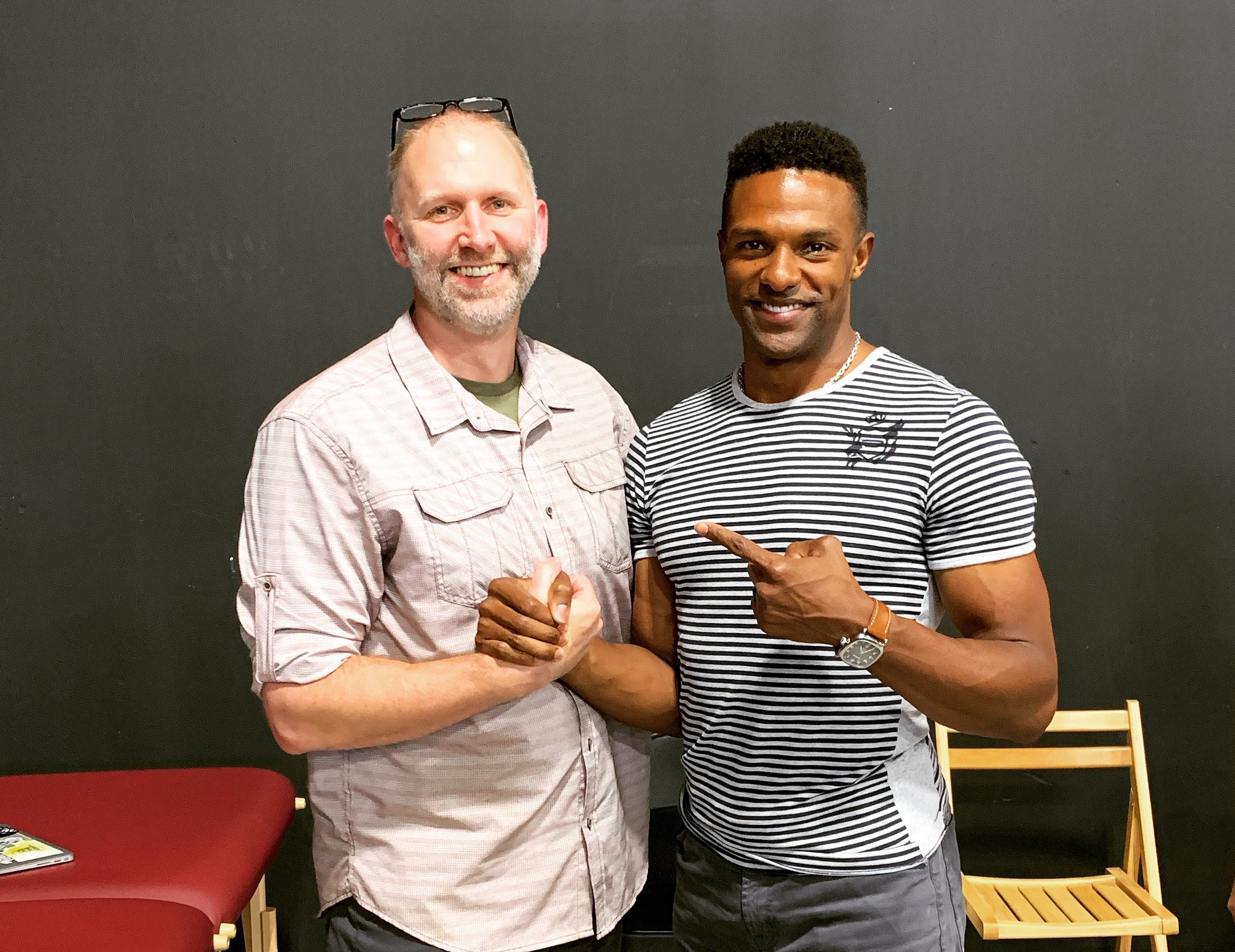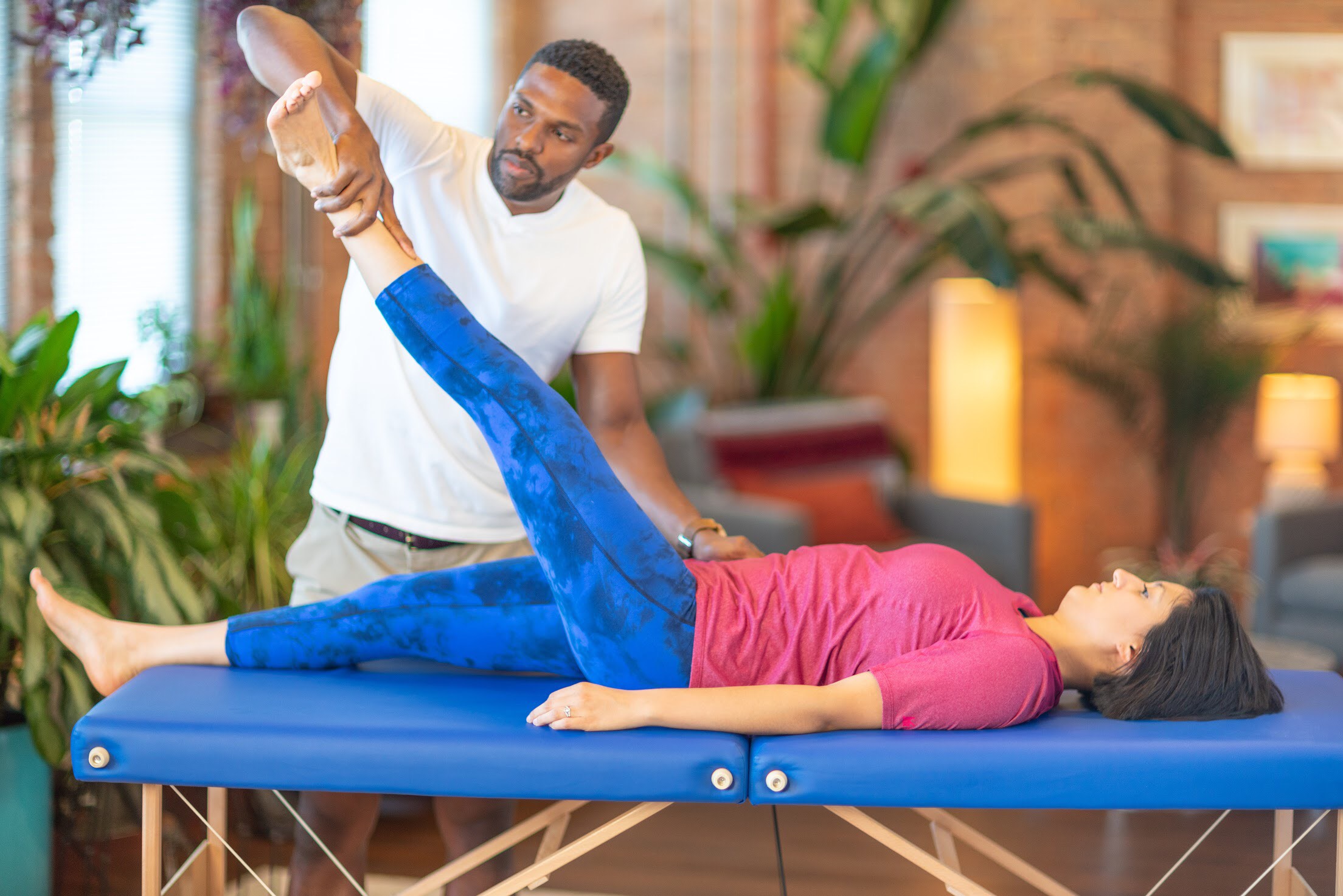In Boulder, Colorado, athletes and older adults suffering from chronic pain have been praising a new healing modality called the “Square 1 System.” Nile Bratcher, movement coach and rehabilitation professional who specializes in restoring agility and good health, has introduced a neuro-response testing and adjustment procedure that even clients are hard-pressed to describe.
Brooke Engel, realtor, artist and former professional athlete, had tried a lot of healing modalities before working with Nile and finally getting good results. She began working with him after a car accident brought a series of inter-related issues to the surface. She was suffering from PTSD, which brought on anxiety, depression, and an inability to sleep, as well as physical pain.
Engle said of the Square 1 System, “It’s hard to explain. It’s easier to define by what it’s not: it doesn’t focus on the problem.” She explained that while other modalities may, “…dig into the area of the pain to hopefully relieve the muscle tension, Square 1 wakens the neuro-pathways to help the muscle fire correctly…”.
The idea is to restore relief from states of tension and unease, rather than putting additional pressure on the points of pain.
Addressing both the brain and the nervous system as a whole
The Square 1 System seeks to improve communication between brain and body. The process seeks to identify underlying causes for improper movement (functional compensations) by focusing on the nervous system and identifying any blocked sensory motor signals.
Engel explained, “It’s working on neuro pathways. It teaches your brain to say to your nervous system, “That highway is open. You’re safe.’ ” She added, “The work on the table brings your fear in balance. So when you work out, your body says, ‘I can lift this and my arm doesn’t hurt,’” once it is safe to do so.
“Nile is also helping me learn how to breathe more efficiently while working out and relaxing parts of my body that shouldn’t be straining—for example, my neck and face. He has taught me to keep a micro-smile on my face and breathe evenly in and out through my nose. This keeps my entire body more relaxed and calm.”

Shawn Sherman of Western Springs, Illinois, created the Square 1 System. He had noticed some clients were responding inconsistently, or even negatively, to a muscle activation technique he had been using, so he started rethinking and retesting patterns related to movement and the brain. In essence, he returned to “square one,” trying out the opposite to see if it would work, and he found it useful.
Eventually, Sherman performed a demo on Bratcher that took him out of pain. He said, “That changed my whole life.” He subsequently trained with Sherman and learned the method to use it in his own practice.
When nothing else has worked
Bratcher said, “People come when they have pain and nothing else has worked, mainly through word of mouth, and just from being in pain from post injuries.”
The process can address many different conditions and has been used for cancer recovery, disc herniations, shoulder and knee pain, neurological issues of the facial muscles, and much more. Basically, Bratcher said, “If you are in chronic pain we can probably help you.”
Engel said, “I noticed a change by the second or third session. I hadn’t been able to type or do anything creative. One day after working with Nile [my husband] Tony even noticed. He said, ‘You’re doing stuff, you’re sewing!’” I wasn’t constantly thinking about the pain in my neck and arm.
He said it is possible to appear to be physically “in shape” but not really healthy. “Many times in Western civilization, we view the mind and body as being separate, but they are not. You can see this in PTSD or psychological issues.”
Evaluating the nervous system first
Whereas other modalities might focus on the muscles or the spine, Bratcher said, “We are adjusting and seeing how your brain feels about it. That’s the difference.”
Bratcher said, “No person gets through this life scot-free. Where there is dysfunction in one place, it follows through almost everywhere in the body resulting in tight shoulders, poor posture. Everything.”
“The brain is the master control center, going straight to nervous system first. We try to see how your mind is functioning, then usually the symptoms resolve themselves.”
Treating the underlying concerns
Bratcher said, “The challenge of expectations are taking into account of the state of mind. If a client says his hip is hurting but he just pops an Ibuprofen to get rid of the symptom, it’s not helping the underlying issue. That is our primary focus. We’re breaking down what is really happening in their body.”
Similarly, while workouts are generally beneficial for health, repetitive motions, especially under heavy weight, may exacerbate existing issues. Bratcher said, “Resistance training… loads down on bones and muscles. You need your body and your mind to communicate with each other to handle stress and to ultimately become stronger.”
Simple guided movements for life
The Square 1 System is not an invasive procedure — no adjustments, no cracking, no stretching. Just small guided movements of the limbs. Yet Bratcher and his clients find it to be effective and fast acting. They say Square 1 immediately helps you feel more relaxed and encourages more movement.

Clients aged 70 or 80 can use the system for this reason, as can injured athletes facing severe pain. “It’s truly fantastic for every person,” Bratcher said.
Additionally, the process heals clients relatively quickly. Bratcher noted, “No one needs this for the rest of their lives, just a period of time to unravel the compensation to move without veering too far left or right.”
He did say that periodic tune ups may need to happen depending on a person’s activity level, adding, “Triathletes need it more often than anyone else.”
Bratcher said he wants to heal people above all else. He explained, “The thing about the fitness and rehab industry is that we tend to think at the max capacity of learning. If anything is different we dismiss it as not important. We’re just trying to wake the industry up and say ‘Hey, I think we’re on to something here.’”
Engel said, “I have never experienced anything like this work, but it makes a lot of sense to me. … A lot of it is the mind-body connection. If you are in physical or emotional pain, your life gets really small unless you reconnect those pathways. I am finally feeling like myself again (pre-trauma), strong, healthy, happy and hopeful.”


